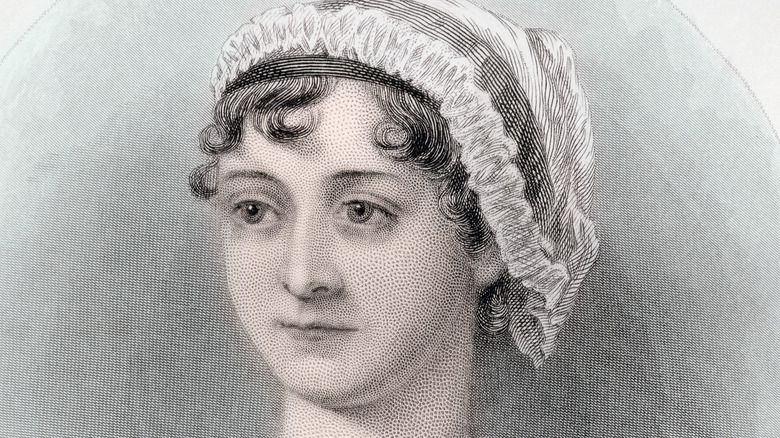Jane Austen Died From This Curable Disease
Jane Austen's legacy continues to endure long after her early death (via CNN). In 1817, 41-year-old Austen's death left a wound in the literary community, compounded by the knowledge that she left a seventh novel unfinished, according to the Jane Austen Society of North America. Her six standing novels have been made and remade into plays, adapted books, movies, and have inspired everything from clothing designs to tea flavors to jewelry to candle scents (via Etsy). She is a staple of early modern literary canon.
While many know her works such as "Pride and Prejudice," "Emma," and "Mansfield Park," few know the details of Jane Austen's life. Most are unaware that she died relatively young, or that records of her life are limited thanks to her sister who, after Austen's death, either "edited or destroyed" much of her correspondence, according to CNN. However, this spotty recording didn't stop Zachary Cope, a physician and surgeon, from posthumously diagnosing Austen with Addison's disease in 1964, 147 years after her death. Cope looked through Austen's surviving letters from the years before her death, some of them completed only a day or two before her passing. Based on the symptoms she described, Cope came to this conclusion.
Addison's disease develops when a person's adrenal glands malfunction and don't produce enough cortisol or aldosterone. Without these hormones, the body cannot regulate its blood pressure or metabolism. When an Addison's patient goes into crisis, their blood pressure and blood sugar drop, both of which can prove fatal (via Mayo Clinic).
Not all experts agree
Though some have run with Cope's suggestion, there are many who doubt his diagnosis, including Katherine White is an Addison's patient and the coordinator for the Addison's Disease Self-Help Group's clinical advisory group in the United Kingdom (via CNN). People with Addison's disease experience serious confusion and extreme headaches when they enter a crisis, neither of which was mentioned in Austen's letters from her final days, according to White.
White suggests that tuberculosis (TB) is a much more likely cause of death. Tuberculosis was common at the time, and the symptoms line up more clearly. Dr. Kenneth Burman, an endocrinologist expert at Washington Hospital Center, told CNN, "It's most likely that she had chronic adrenal insufficiency and that the final cause could have been secondary infection such as TB." He also cast doubt on another speculated cause of death: lymphoma.
These days, there are almost a dozen drugs that can treat tuberculosis, according to the CDC. If a person infected with TB progresses to the disease phase, doctors will prescribe one of ten drugs. After six to nine months of treatment, the patient is usually cured. But Austen didn't have these options available. In the late 18th and early 19th centuries, TB was a serious disease that often meant death, as detailed by the American Journal of Respiratory and Critical Care Medicine. And this, sadly, may have been what cut Austen's life short. But as Dr. Burman warned when speaking to CNN, diagnosing historical figures is always a guessing game, and we may never be 100% certain.


